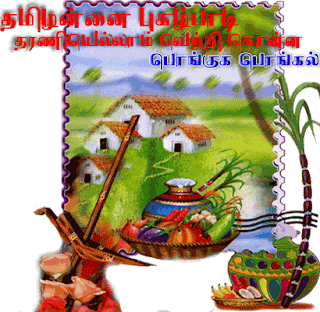முனைவர் ஜியார்ஜ் எல்.வறார்ட் அவர்கள் ஆங்கிலக் கட்டுரையின் தமிழாக்கம்
தமிழ் ஒரு செம்மொழி என்ற தகுநிலை பற்றிய ஒரு விளக்கவுரை வழங்கவேண்டுமென்று கேட்டுக் கொண்டதற்கிணங்க, பெருமகிழ்ச்சியுடன் ஏற்று இதனை எழுதுகிறேன்.
1975-ம் ஆண்டு முதல் பெர்க்ளி கலிபோர்னியா பல்கலைக் கழகத்தில் நான் ஒரு பேராசிரியராக உள்ளேன் தற்சமயம் அங்கு தமிழ்த்துறை தலைவன். 1970 ஆம் ஆண்டு ஃகார்வடு பல்கலைக் கழகத்தில் வடமொழி (சமசுகிரித)ப் பட்டம் பெற்றேன். எனது முதல் அனுபவம் 1969ல் மேடிசன், விஸ்கான்சின் பல்கலைக்கழகத்தில் வடமொழிப் பேராசிரியர் வேலை ஏற்றது. தமிழ், வடமொழி தவிர இலத்தீன், கிரேக்கச் செம்மொழிகளை அறிந்து அவற்றின் மூலம் அந்த இலக்கியங்களையும், மொழி ஒப்பியல் ஆய்வு நு}ல்களையும் விரிவாக படித்துள்ளேன்.
அவற்றுடன் உருசியன், செர்மன், ஃபிரென்சு ஆகிய தற்கால ஐரேப்பிய மொழிகளிரும் நல்ல பரிச்சயம் உண்டு. அம்மொழி இலக்கியங்களையும் விரிவாகக் கற்றுள்ளேன். இவை தவிர இந்திய இலக்கியங்களில், தமிழ் மலையாள நு}ல்களை அம்மொழிகள் வாயிலாகவும், பிற மொழி நு}ல்களை ஆங்கில மொழியாக்கங்களின் வழியும் படித்துள்ளேன். தெலுங்கு மொழியின் தலையாய் அறிஞர்களுள்; ஒருவரான திரு வி.நாராயணராவ் அவர்களுடன் நெடிது உரையாடப்பெற்ற வாய்ப்புக்கள் வழி அம்மொழியின் பாரம்பரியத்தையும் நன்கு அறிவேன். கிழக்காசிய மொழிகள் துறையின் நீண்ட நாள் உறுப்பினன் என்ற முறையில் இந்திமொழி இலக்கியச் செழிப்பை அறிந்துணரும் வாய்ப்பும் பெற்றேன். துளசி, கபீர், மகாதேவ வர்மா நு}ல்களை ஆழமாகப் பயின்றுள்ளேன்.
நான் பல ஆண்டுகளை உண்மையில் 1969 முதல் என் வாழ்வின் பெரும்பகுதியை வடமொழிக் கல்வி ஃ ஆய்வில் பயன்படுத்தியுள்ளேன். காளிதாசர் மகா படைப்புக்களை முழுமையாகவும், பவாரி, சிறீஃகர்சா நு}ல்களில் பல பகுதிகளையும் வடமொழி மூலத்தில் படித்துள்ளேன். இவை தவிர இருக்வேத ஐந்தாவது மூலப் பொத்தகத்தையும், பல உபனிசத்துக்களையும் மாபாரதம், கதா சரிதசாகரம், ஆதிசங்கரர் நு}ல்களில் பெரும் பகுதிகளையும், மற்றும் பல மொழி வடமொழி நு}ல்களையும் கற்றுள்ளேன்.
நான் இவற்றையெல்லாம் இங்கு சொல்வது, எனது அறிவாற்றலை வெளிப்படுத்தும் நோக்கத்தில் அன்று. ஒரு இலக்கியத்தில் செம்மொழிப் பாங்கைச் சீர்து}க்கும் தகுதி எனக்கு உண்டு என்பதைத் தெளிவுபடுத்த மட்டுமே.
எவ்வகையான அளவைக் கோட்பாடுகளைத் தேர்ந்து நோக்கினாலும், மேலான உலக பாரம்பரியங்கள், செம்மொழி இலக்கியங்களைக் கொண்ட மொழிகளில், நிச்சயமாகத் தமிழ் ஒரு சிறப்பான இடம் பெற்றுள்ளது என்பதை எந்தத் தயக்கமுமின்றி உறுதியாகச் சொல்ல முடியும்.இதற்கான காரணங்கள் பல, அவற்றை ஒவ்வொன்றாகப் பார்ப்போம்:
முதன்மையாக, தமிழ் மிகத் தொன்மையான மொழி. பிற இந்திய மொழிகளின் தற்கால இலக்கியங்களை விடத் தமிழ் ஆயிரம் ஆண்டுகளுக்குமேல் காலத்தால் முற்பட்டது. தமிழின் பழமையான நு}லான தொல்காப்பியத்தின் பகுதிகள், பழைய கல்வெட்டுகளையும், செப்பேடுகளையும் வைத்து நோக்கும்போது கி.மு. 200 ஆண்டிற்கு முற்பட்டதாகத் தெரிகிறது. பழந்தமிழின் பெருமை போற்றும் சங்ககாலத் தனிப்பாடல் திரட்டுக்கள், பத்துப்பாட்டு போன்றவை கி.பி. முதல் இரண்டு நு}ற்றாண்டுகளைச் சேர்ந்தவை. அவை இந்தியாவில் முதல்முதலான, சமயங்களுக்கு அப்பாற்பட்ட, உலகியல் வாழ்வு தழுவிய சிறப்புடைய பாடல் தொகுதிகளாகும்.
இரண்டாவதாக, இந்திய மண்ணின் மணம் கமழும் இலக்கியப் பாரம்பரியமாக, வடமொழித் தொடர்பில்லாது தோன்றிச் செழித்தது தமிழ் மட்டுமேயாகும். வடமொழியின் தாக்கம் தெற்கே பரவி வலுப்பெறுவதற்கு மிக முன்னதாகத் தோன்றியவை தமிழ் இலக்கியங்கள.; அவை பண்பில் தரத்தில் வடமொழி, பிற இந்திய மொழி இலக்கியங்களிலிருந்து வேறுபட்டு நிற்க்கின்றன. தனக்கே உரிய செய்யுள் அமைப்பு முறைகள், இலக்கணப் பாரம்பரியம், தமிழ் மண்ணில் தோன்றிய நுண்ணறிவியலின் எழில், தன்னேரில்லாது பரந்து விரிந்து இலக்கியச் செழிப்பும், தனித்தன்மையும் கொண்டது.
ஒப்புவமையற்ற இந்தியப் பண்பாட்டு உணர்வுகளை தமக்கே உரிய முறையில் தமிழ் இலக்கிங்கள் வெளிக்கொணர்ந்துள்ளன. விரிந்த பரந்த, மிகச் செழிப்பான, நுண்மாண் நுழைபுலன் விளைச்சலைக் கொண்ட பெட்டகங்கள் அவை. வடமொழி, மற்ற இந்திய மொழிகளில் உள்ளதைவிட பெரிதும் மாறுபட்ட, இந்திய அறிவுணர்வை உள்ளடக்கியவை.
மூன்றாவதாக, உலகப் புகழ்பெற்ற சமசுகிருத, கிரேக்க, இலத்தீன், பார்சி, அரபியப் பேரிலக்கியங்களுடன் ஒப்பிடும்போது, தரத்தில் முன்னணியில் நிற்கும் தகுதியுடையவை தமிழிலக்கியங்கள். அவற்றின் நுட்பமும், முழுமையும,; திண்மையும், உலகளாவிய பல்நோக்குப் பார்வையும், தமிழை உலகின் சிறந்த பண்பாட்டுப் பாரம்பரியங்கள், இலக்கியங்களின் வரிசையில் அமர்த்தும் தகுதியைத் தந்துள்ளன. முதன்மையான, முதன்மைக்கு அடுத்த நிலையினரல்லாது பொதுமக்களைப் பற்றியும் விரிவாகப் பேசும் முற்கால இந்திய இலக்கியம் தமிழ் ஒன்றே. அறம்பாடும் உலகின் முதன்மையான நு}ல்களில் பொதுவானது திருக்குறள் என்பது யாவரும் அறிந்ததே.
திருக்குறள் தமிழின் இலக்கியப் பாரம்பரியத்தைப் பறைசாற்றத் தோன்றிய பல பன்முக, பல்வகை துறை முதன்மை நு}ல்களில் ஒன்றேயாம். மாந்தர் வாழ்வியலை அகழ்ந்தாய்ந்து அதன் பன்முகத் தோற்றங்களுக்கு ஒளியேற்றியதில் தமிழ் இலக்கியம் ஈடுஇணையற்றது.
முத்தாய்ப்பாக, தமிழ் தற்கால இந்தியக் கலாசாரத்திற்கும் பாரம்பரியத்திற்கும் ஊற்றுக்கண்ணாக விளங்கும் ஒரு முதன்மையான தன்னிலை, தற்சார்புள்ள (சுதந்திரமான) மொழி. தெற்கத்திய பாரம்பரியத்தின் தாக்கம் வடமொழி செய்யுள் பாரம்பரியத்தில் பரவியுள்ளது பற்றி ஏற்கனவே விரிவாக எழுதியுள்ளேன்.
அதேபோல் சிறப்புடையவை. சங்ககாலம் தொடங்கிய பாடல் தொகுதிகள், தமிழர் இந்து சமயத்தின் புனிதமிக்க பேரிலக்கியங்கள் அவை தற்கால இந்துக் கோட்பாடுகளுக்கு அடித்தள அதார உறுதி தருபவை. அவற்றினுடைய கருத்துக்கள் சமசுகிருத, தெலுங்கு, கன்னட மொழிகளில் பகவத புராணம், மற்ற நு}ல்களில் ஏற்றொழுகப்பட்டு, மேல் இந்தியா முழுதும் பரவியுள்ளன. புனிதத்தில் வடக்கின் நான்கு வேதங்களுக்கு இணையாகக் கருதப்படும் நு}ல்கள் தமிழில் உள்ளன. அத்திருமறைகள் வேத மந்திரங்களோடு, திருப்பதி போன்ற வைணவத் தலங்களில் ஓதப்படுகின்றன. தற்கால ஆரிய - இந்திய மொழிகளுக்கு வடமொழி ஊற்றுக்கண்ணாக இருப்பதைப்போலவே, தற்காலத் தமிழ், மலையாளம் போன்ற மொழிகளுக்குச் செந்தமிழ் அடிப்படை. இந்திய ஆரிய மொழிகளில் சமசுகிருதம் மாற்றங்களை ஏற்காத, பழமை பேணும் மொழியாக இருப்பதைப் போலவே, திராவிட மொழிகளில் பழமை போற்றும் மொழி தமிழ், திராவிடரின் இயல்பு. முன்னேற்றம் பற்றி அறிய விரும்பும் மொழியியலார் நாடும் உரைகல்.
தமிழ் ஏன் இன்னும் செம்மொழியாகக் கண்டு ஏற்கப்படவில்லை என்பதைப் புரிந்துகொள்ள முனையும்போது, நான் ஒரு அரசியல் காரணத்தையே காணுகிறேன். தமிழ் செம்மொழியாகத் தேர்வு செய்யப்பட்டால், மற்ற இந்திய மொழிகளும் அந்த நிலைக்கு உரிமை கொண்டாக்கூடும் என்ற அச்சமே. இது தேவையற்ற கவலை. தற்கால இந்திய மொழிகளின் சிறப்பையும் நான் அறிவேன் - அவை உலக மொழிகள் பலவற்றுடன் ஒப்பிடும்போது செழிப்பும், ஆக்கத்திறனும் கொண்டவை.
அவை ஒவ்வொன்றும் உலக மொழி இலக்கியங்களுக்கு இணையான இடைக்கால, தற்கால இலக்கியங்களைக் கொண்டவை. ஆனாலும் அவற்றில் எதுவும் செம்மொழியன்று. ஆங்கிலம் போன்ற தற்கால ஐரோப்பிய மொழிகள் (கிரேக்கம் தவிர) ஏற்கனவே இருந்த செம்மொழிகளின் பாரம்பரியத்தைத் தழுவிப் பின்னால் கி.பி. இரண்டாயிரத்தாணடில் வளர்ந்தவை. ஐரோப்பாவின் செம்மொழியாக உலகமுழுதும் கிரேக்கம் அறியப்பட்டுள்ளது என்றாலும் அதனால் ஃபிரென்சும், ஆங்கிலமும் செம்மொழிகளுக்கான நிலையைக் கோரமுடியும்.
செம்மொழிப் பாரம்பரியத் தகுதிபெற, ஒரு மொழி பல சீர்நிலைக் கோட்பாடுகளுக்குப் பொருந்தவேண்டும். அதற்குப் பழந்தொன்மை, வேறொரு பாரம்பரியத்தின் கிளையாக அமையாத தற்சார்பு வளர்ச்சிப் பாரம்பரியம் இவற்றுடன் செல்வச் செழிப்பு மிகுந்த பழம் இலக்கியத் தொகுப்புக்களைக் கணிசமான அளவு பெற்றிருக்கவேண்டும். பிற தற்கால இந்திய மொழிகளைப் போலல்லாது தமிழ் மேற்சொன்ன எல்லாத் தகுதிகளையும் தன்னகத்தே கொண்டது. தமிழ், இலத்தீன் மொழிபோல் மிகமிகப் பழமையானது, அரபி மொழிக்கு மூத்தது. வடமொழி அல்லது வேற்றுமொழித் தாக்கங்கள் இல்லாமல், முழுமையான தன்னிலைத் தோற்றம். வளர்ச்சிப் பாரம்பரியங்களுடையது. அதன் பழம்பெரும் இலக்கியங்கள் சொல்லில் விரிக்கவியலாப் பரப்பும், செல்வச் செழிப்பும் கொண்டவை.
தமிழ் செம்மொழி இலக்கியச் சிறப்புக்கள் உடையது என்ற உரிமையை நிலைநாட்ட, நான் இதுபோல் ஒரு உரையை எழுதவேண்டும் என்பது, விந்தையாகத் தோன்றுகிறது. இது இந்தியா பெருமைமிக்க நாடு, இந்துசமயம் உலக மதங்களில் சிறந்த ஒன்று என்று வாதாடுவதைப்போன்றது. உலகில் சிறந்து விளங்கும் செம்மொழிகளில் தமிழ் ஒன்று என்ற மேலான தகுதி, மொழியியல் அறிந்தவர்களுக்கு வெள்ளிடை மலை, உள்ளங்கை நெல்லிக்கனி. தமிழின் செம்மொழித் தகுதியை ஏற்க மறுப்பது, இந்திய நாகரிகத்தின் பெருமைக்குக் கருவான மையப் பகுதியைக் காண மறுப்பதாகும்.
